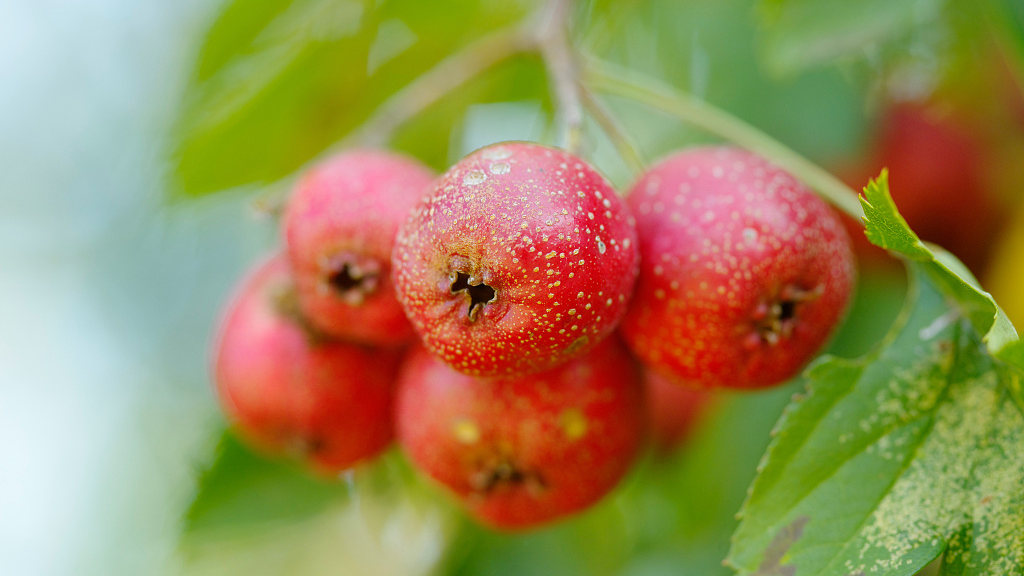
How is the hawthorn fruit eaten in your country? /VCG Photo
How is the hawthorn fruit eaten in your country? /VCG Photo
How do you eat hawthorn in your hometown? Raw, cooked, made into jam or jelly, or a wine/punch?
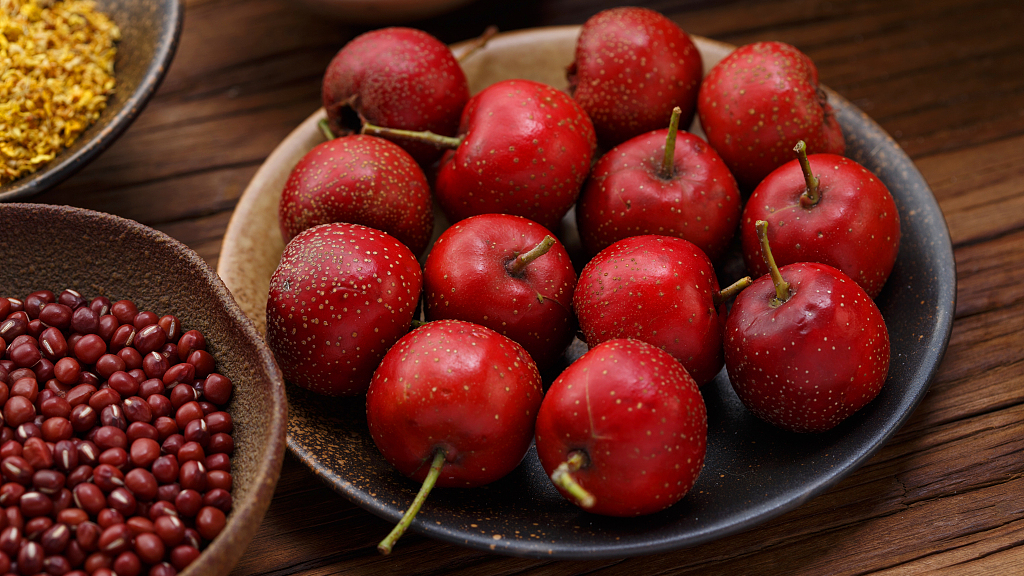
The hawthorn is a fruit that can be eaten many ways. /VCG Photo
The hawthorn is a fruit that can be eaten many ways. /VCG Photo
The hawthorn fruit, or hawthorn berry, is an amazing fruit that can be eaten in many ways.
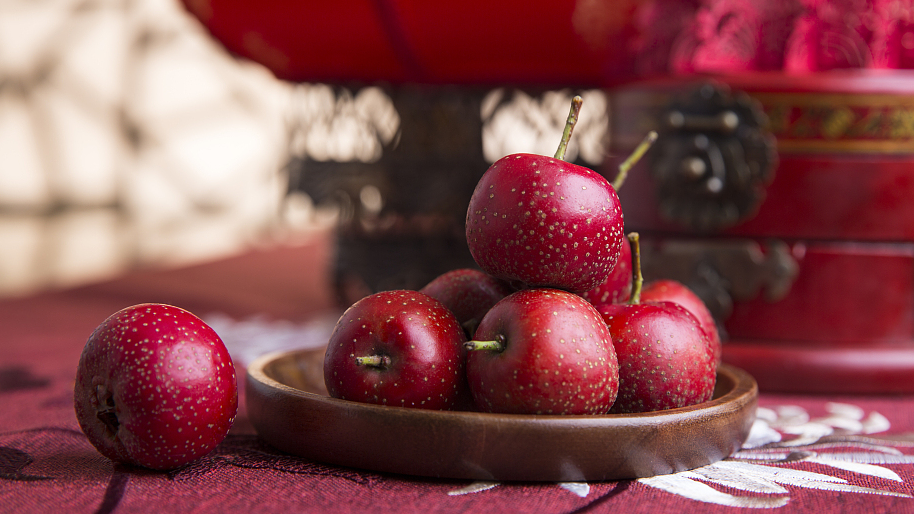
The hawthorn is one of Beijing local residents' favorite fruits. /VCG Photo
The hawthorn is one of Beijing local residents' favorite fruits. /VCG Photo
If you come to China's capital city Beijing, you may find some creative ways to enjoy the sweet little red fruit.
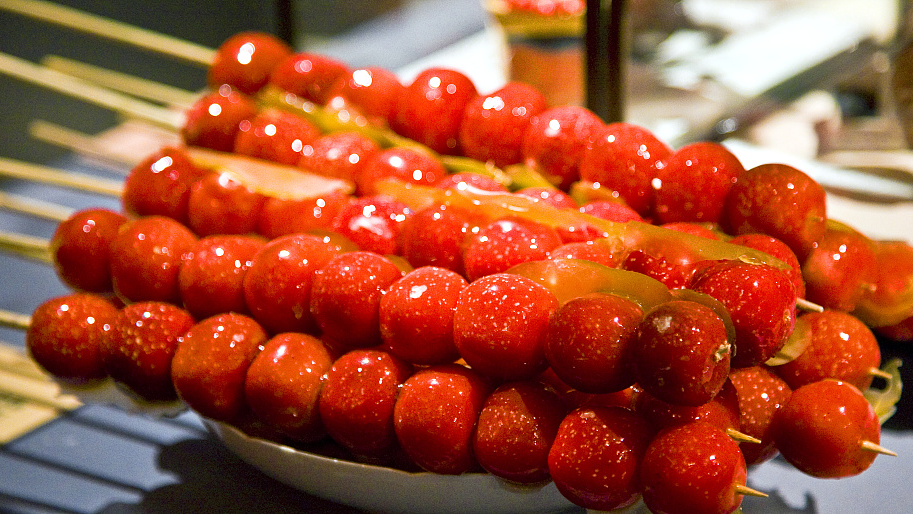
A famous Beijing snack: Tanghulu (sugar coated hawthorn). /VCG Photo
A famous Beijing snack: Tanghulu (sugar coated hawthorn). /VCG Photo
Tanghulu (literally meaning "sugar gourd"): It has nothing to do with the gourd, but the snack is made of about a dozen hawthorn fruits stringed up on a stick. Each hawthorn is coated with melted sugar. Bright red hawthorn and crystal clear golden sugar is a perfect match, as well as the of sour and sweet mixture of taste. It has long been the top-ranked Beijing snack for visitors from home and abroad.
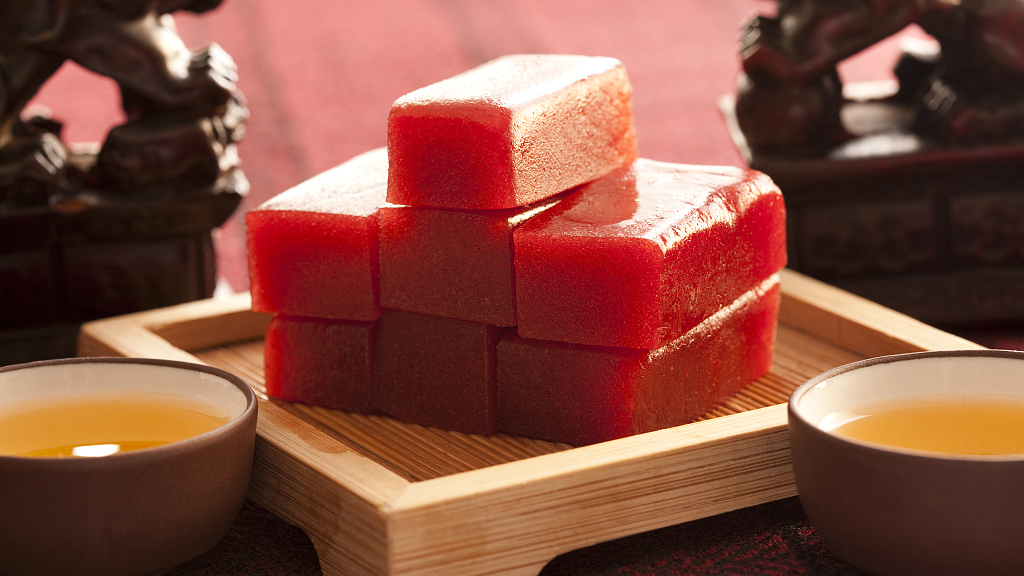
Hawthorn cakes. /VCG Photo
Hawthorn cakes. /VCG Photo
Hawthorn cake: It is a great appetizer when you do not feel like eating anything during the hot summer. Besides, it plays an important role in the famous dish Beijing roast duck. Try eating hawthorn cake together with the duck, and you will become a professional roast duck eater!
Another unique way of eating hawthorn is slicing and mixing it with pears. It is a traditional cold dish invented by those "Old Beijingers" (people born and lived in Beijing for generations).
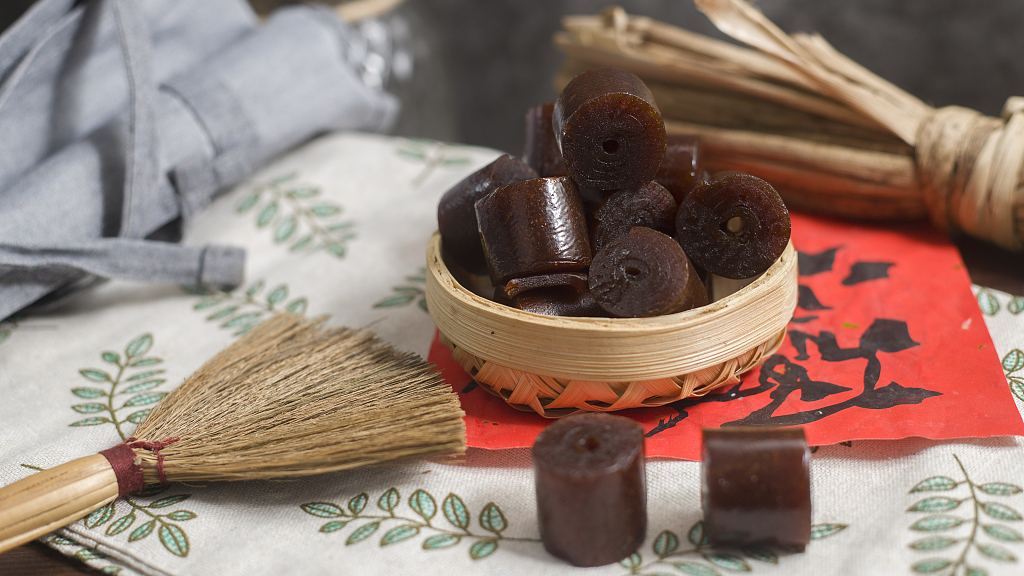
Guodanpi, a hawthorn snack. It tastes better than it looks! /VCG Photo
Guodanpi, a hawthorn snack. It tastes better than it looks! /VCG Photo
Guodanpi: It is one of the favorite snacks for children who grew up in Beijing. It is made of hawthorn berries that are marinated in honey, sliced into strips and rolled up. It looks and tastes like a hardened jelly. The best thing about it is, as a snack, it is cheap enough!
Hawthorn flake and hawthorn strip are similar to guodanpi, but not translucent – they are more like candies or cookies rather than jelly.
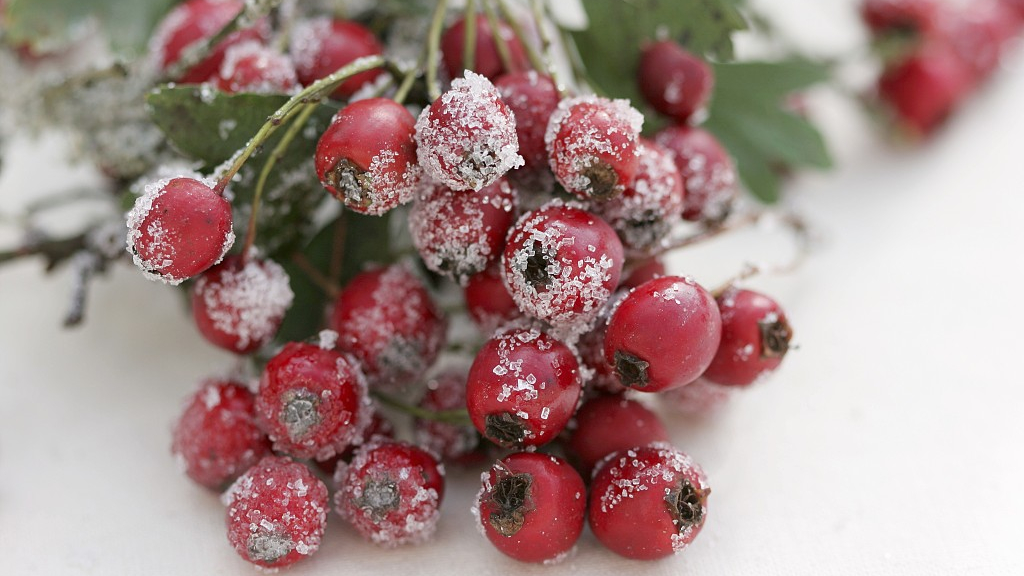
The hawthorn snack "sugar snowball" looks just like this but it is not served cold. /VCG Photo
The hawthorn snack "sugar snowball" looks just like this but it is not served cold. /VCG Photo
Sugar snowball: This is a pretty nickname for stir-fried sugar hawthorn. If you are trying to lose weight, stay away from it! Since the hawthorn fruit is sour, it is usually mixed up with large amounts of sugar. Certainly it is not friendly to those on a diet, but your sweet teeth will be fully satisfied!
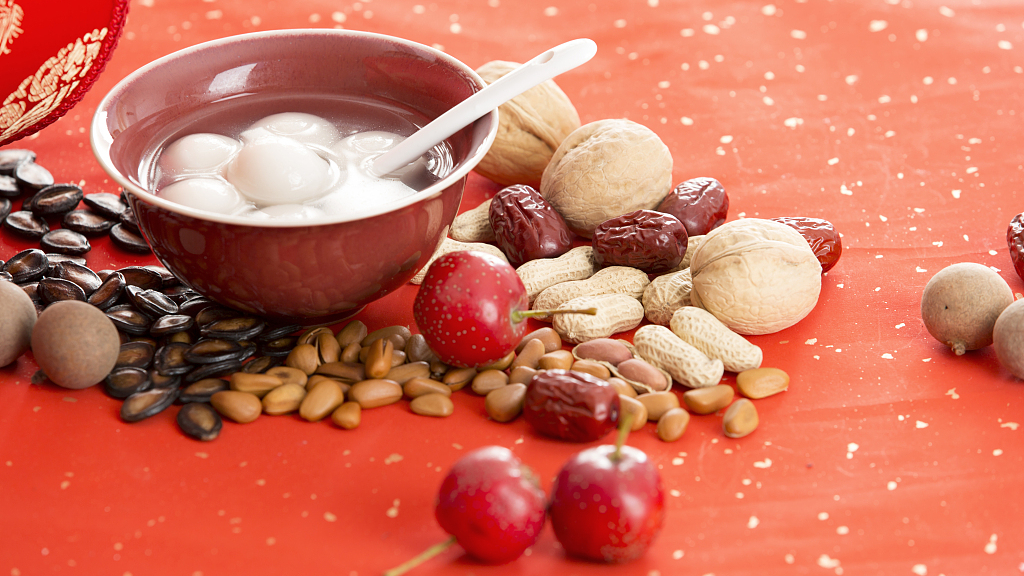
Hawthorn Yuanxiao, or hawthorn Tangyuan. /VCG Photo
Hawthorn Yuanxiao, or hawthorn Tangyuan. /VCG Photo
Hawthorn Yuanxiao or hawthorn Tangyuan: the Yuanxiao or Tangyuan is a glutinous rice ball for China's traditional Lantern Festival. Hawthorn jam is a popular filling for this festival food.
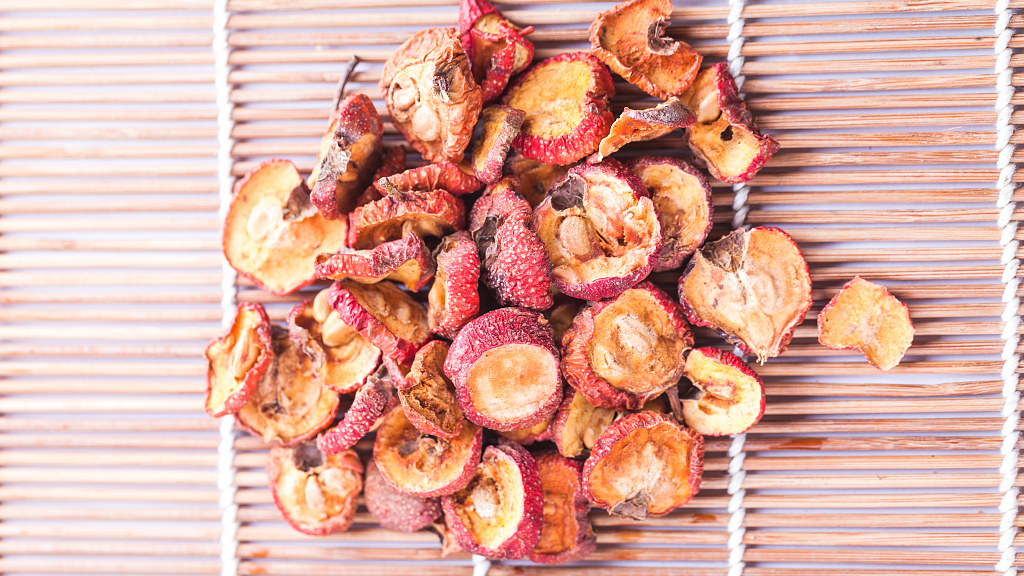
Dried hawthorn chips. /VCG Photo
Dried hawthorn chips. /VCG Photo
Dried hawthorn: It is almost everywhere – in soups, hotpots, porridge, pork stew, and the typical Beijing drink, Ba Bao Cha (assorted Chinese herbal tea).
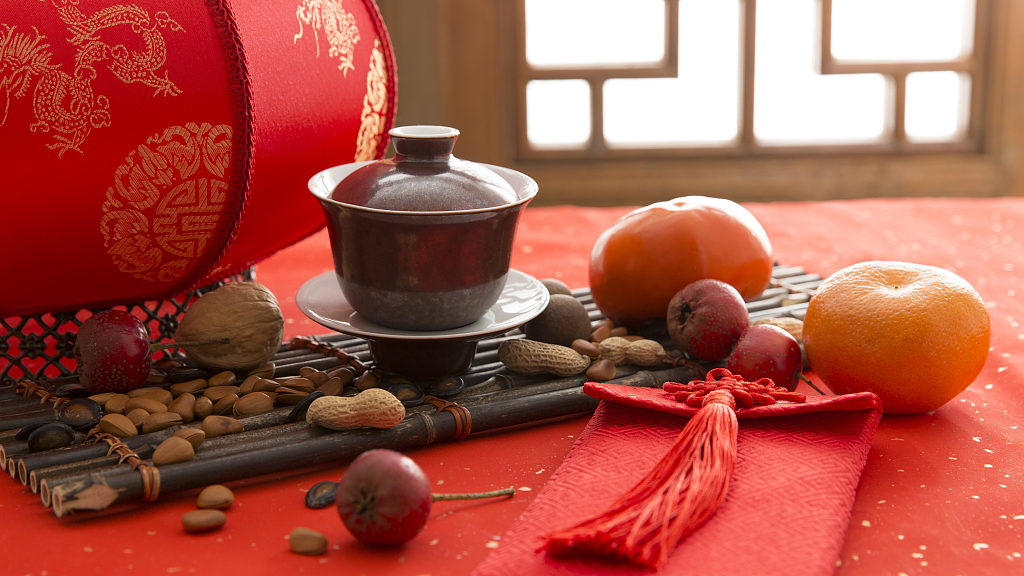
One of the "most Beijing" drinks: Ba Bao tea (assorted herbal tea), which contains several fruits including dried hawthorn. /VCG Photo
One of the "most Beijing" drinks: Ba Bao tea (assorted herbal tea), which contains several fruits including dried hawthorn. /VCG Photo
China's Flora Tour
From the wetlands along the coast to the dense rainforests hidden in the southwest of China, all boast an array of plant species. In this series, CGTN will go on a tour to learn about some of the most iconic flora in different provinces and see how they live in harmony with the local climate and topography.
(Cover photo via VCG, designed by CGTN's Li Jingjie)
(If you want to contribute and have specific expertise, please contact us at nature@cgtn.com)